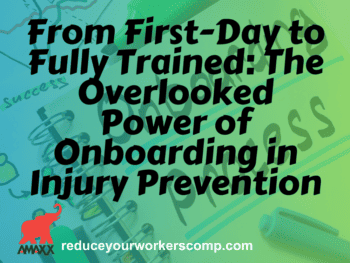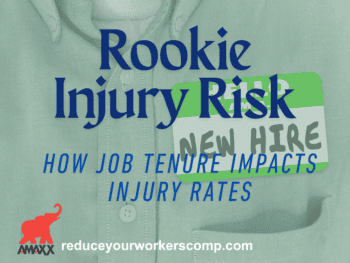
Areas of Concentration for Cost-Savings
There are a number of work injuries that occur every year, which are preventable. A leading mechanism of injury is the result of employers who do not see value in workplace ergonomics and avoidance of repetitive trauma injuries. Common injuries that result include tendinitis, bursitis, systemic diseases (eg – rheumatoid arthritis and gout), carpal/cubital tunnel syndromes, and lateral epicondylitis (tennis elbow).
There are many areas where employers can concentrate their efforts to save money in their workers’ compensation programs. The process should be ongoing and needs to include everyone, including employees.
Click Link to Access Free PDF Download
“4-Step Sequence For Effective Employee Screening, Hiring, & Placement”
Review of Workplace Ergonomics
Ergonomics is the study of people’s efficiency in their work environment. The study of workplace ergonomics has been an issue since the development of safety standards in industrial America. It became more commonplace in the late 1970s when employers started to recognize its value as a tool to increase productivity and reduce work injuries.
There are three main areas of focus for ergonomics to reduce work injuries and to promote a safer work environment.
- Work activities of any nature should allow the employee to maintain a safe and healthy posture while performing the necessary activities of their employment;
- The muscular force exerted by an employee when performing all work activities should use the largest muscle group. This prevents strains, sprains and unnecessary wear and tear on joints; and
- All activities should consider the range of movement employees are required to make during the course of their day. This is an important consideration to important body parts such as a person’s head, trunk, and upper limbs.
Repetitive Work Activities and Injury Prevention
Traditionally workers’ compensation programs have focused on these type of activities in blue-collar settings. Proactive members of the claims management and risk management teams will consider it for all positions, including office-based position.
When evaluating positions for the perils of repetitive movements, it is important to consider a number of factors. This will include the ability to modify a particular job to focus on the findings of an ergonomics review. Pay close attention to the following:
- The ability of an employee to take regular work breaks that do not disrupt performance. Allowing employees to sit/stand while they work can reduce stress on one’s body.
- Evaluate if the work activity allows the employee to maintain a “neutral body position.”
- All positions and workstations should be set up to allow employees to sit straight up. There should be an emphasis on one’s core.
- The placement of a computer monitor can make a significant difference in workers’ compensation cost savings. If it is placed too high or low, the resulting stresses can cause neck pain that influences other parts of an employee’s body.
A proactive employer supported by an innovative claims management team can reduce the physical stresses that result in countless work injuries every year.
Conclusion
Workers’ compensation programs can reduce costs by taking steps that concentrate on ergonomics and the movements employees make while performing their work activities. While it may take an investment of time and money, the long-term benefits to a program are immeasurable.

Contact: mstack@reduceyourworkerscomp.com.
Workers’ Comp Roundup Blog: http://blog.reduceyourworkerscomp.com/
©2023 Amaxx LLC. All rights reserved under International Copyright Law.
Do not use this information without independent verification. All state laws vary. You should consult with your insurance broker, attorney, or qualified professional.
















